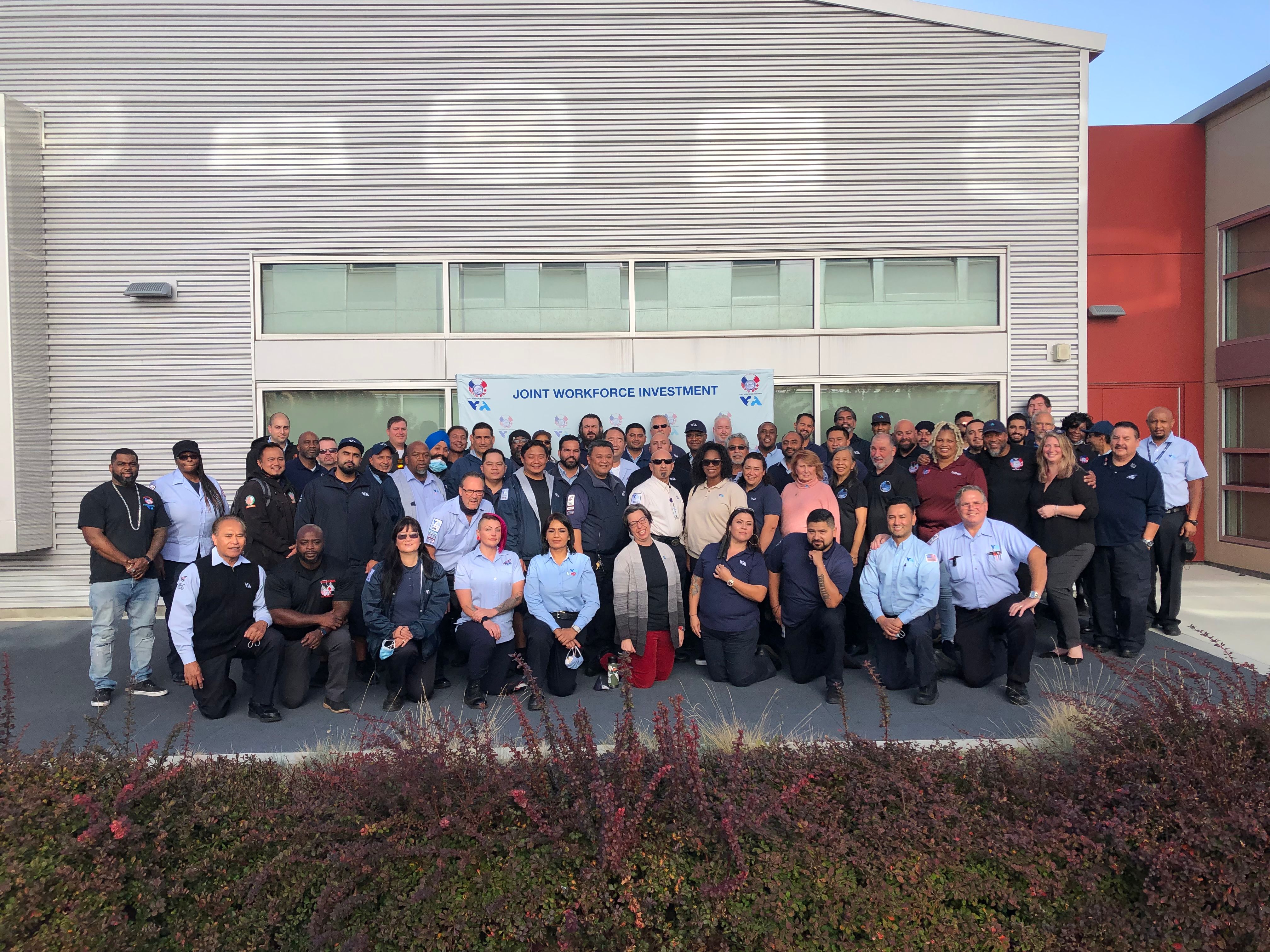
Founded in 2006, the Joint Workforce Investment is a High Road Training Partnership (HRTP) between Santa Clara Valley Transportation Authority (VTA) and Amalgamated Transit Union Local 265. JWI has pioneered the labor-management partnership approach in transit and continues to lead the industry in workforce development programs.
JWI is one of three transit HRTPs that founded California Transit Works! (CTW) in 2016. CTW is a consortium of transit HRTPs that provides technical assistance and resources to transit agencies, transit unions, and educational institutions in the state of California that wish to take the High Road to workforce development. The HRTP model has proven that labor-management partnerships are an effective vehicle for finding solutions to challenges and advancing shared goals.
We sat down to interview Jamaine “G” Gibson, Director of Apprenticeships and Workforce Development for the ATU International and Lisa Vickery, Deputy Director of Bus Operations for Santa Clara Valley Transportation Authority, about their experiences with Joint Workforce Investment.
What advice would you pass on to others looking to create and maintain labor-management partnerships?
The best advice is to determine your common goals and how both sides can work together to achieve them. The partnership must be a priority centered around the workforce. If the partnership is not a priority and there isn’t buy-in from both labor and management stakeholders, the probability of having a sustainable partnership is debilitated.
What makes the Joint Workforce Investment successful?
The JWI was built with a bottom-up approach, with the understanding that trust must be maintained on both sides and that inclusion of frontline workers is the key to success. Worker voice is incorporated from the beginning when challenges are discussed, not after decisions have been made. While both parties remain committed to the partnership and the keys noted above, funding is essential for any partnership to survive. According to The High Road to Economic Prosperity Report the partnership is paying out dividends for labor and management stakeholders by
-
Beginning when challenges are discussed, not after decisions have been made.
-
Creating an ecosystem where equity is a priority,
-
Offering a more inclusive definition of industry leadership,
-
Being an innovative model for workforce development that is responsive to change, and
-
Building collective power and worker voice.
While both parties remain committed to the partnership and the principles noted above, funding is essential for any partnership to survive.
Has the JWI faced any challenges with implementing and sustaining the partnership?
Yes, partnerships are like relationships. There are going to be ups, downs, challenges, and setbacks. A key to help our partnership move forward with common goals is having a neutral third party who both sides can trust. When we get to a point where we don’t seem able to agree and cannot move forward, the third party helps us to work through those challenges, with mutual respect.
What words of wisdom would you like to impart to workers and employers about Labor-Management Partnerships?
Partnerships are a win-win for workplaces and can help change the organizational culture in a positive way. A culture that is collaborative means there are no hidden agendas and the parties have the potential to produce a result that is greater than what either party would have been able to accomplish in isolation.
The JWI is just one example of a labor-management partnership in the transit industry that has worked to improve job quality and enhance performance. When a partnership does its job “right,” it allows the partners to utilize best practices to improve workplaces, and it combines the best of both worlds - labor and management - working together to overcome organizational challenges. We urge you to take labor-management partnerships on the road to your workplace!
For more information on getting started with your own labor-management partnership, visit the Labor-Management Partnership page.
Darnice Marsh is the labor-management partnership coordinator in the Department of Labor’s Office of Labor-Management Standards.
Andrew Hasty is a senior advisor on detail with the Department of Labor’s Office of Labor-Management Standards.
This blog contains links to information created and maintained by other public and private organizations. Please be aware that the U.S. Dept. of Labor does not control or guarantee the accuracy, relevance, timeliness, or completeness of this outside information. Further, the inclusion of links to particular items is not intended to reflect their importance, nor is it intended to endorse any views expressed or products or services offered by the author of the reference or the organization operating the site on which the reference is maintained.

 U.S. Department of Labor Blog
U.S. Department of Labor Blog
